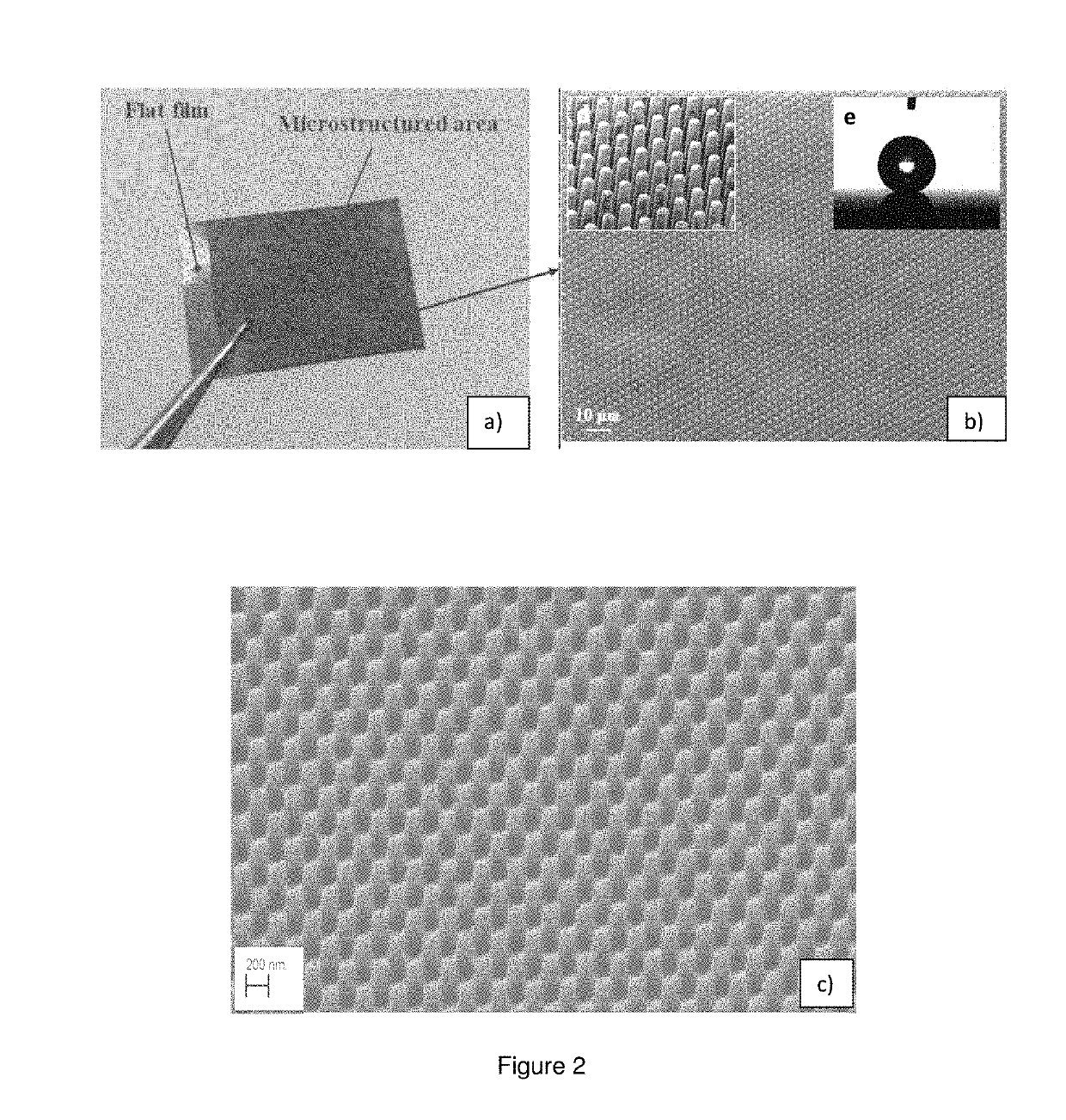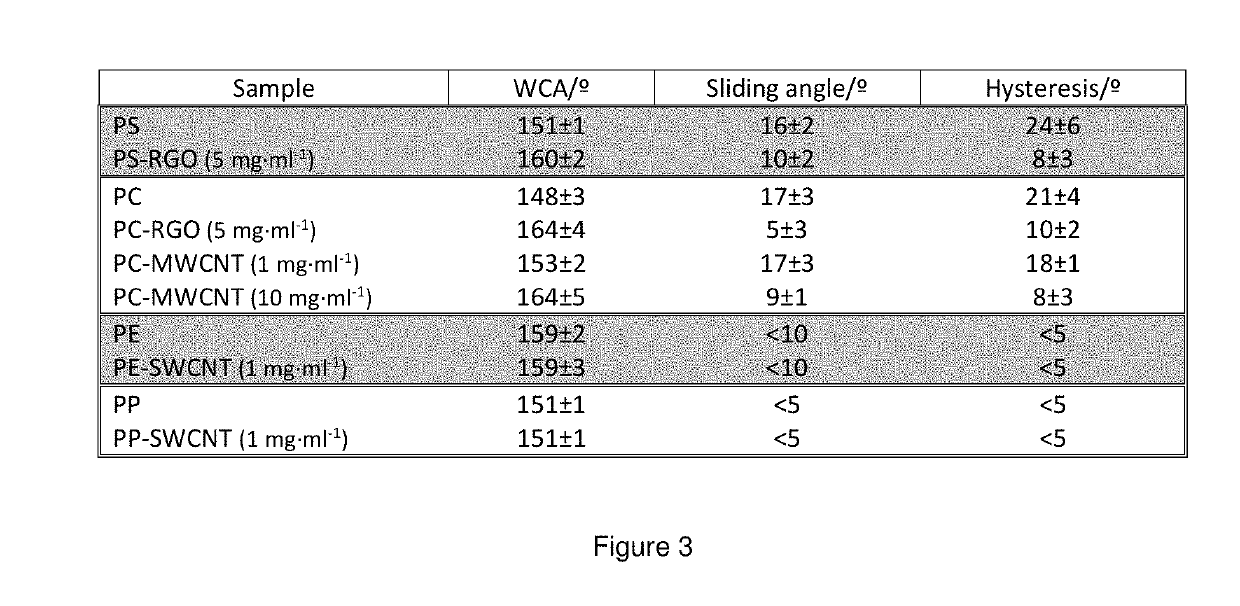Polymeric composites with functional surfaces
a polymer composite and functional surface technology, applied in the field of composites, can solve the problems of membrane rupture, lack of broad band reflectivity, and high cost of the process to produce these layers, and achieve the effect of low cost and simple and efficient fabrication
- Summary
- Abstract
- Description
- Claims
- Application Information
AI Technical Summary
Benefits of technology
Problems solved by technology
Method used
Image
Examples
example 1
Preparation of Composites of the Invention Containing Carbon-Based Particles
example 1a
)
Preparation of a Composite RGO / PS of the Invention
[0110]Initially a stable dispersion of 5 mg / ml RGO is prepared by dispersing RGO flakes (1-5 μm in width) in ethanol, and applying several cycles of ultrasonication and dispersion using Ultraturrax dispersion tool (10000 rpm). Then, 100 μl of the dispersion of particles was applied per cm2 of the polystyrene surface via spin coating at 1000 rpm. The excess of solvent was evaporated or eliminated via vacuum drying.
[0111]Subsequently, the coated polymer was imprinted with a mold with the negative superhydrophobic features patterned on it, by applying heat to a temperature of 160° C. and 50 bars of pressure. Upon cooling, the composite having an imprinted textured surface was demolded. FIG. 2b shows a SEM image of the prepared composite having a textured surface with 2 μm×12 μm pillars.
example 1b
)
Preparation of SWCNT and MWCNT Polymer Composites of the Invention
[0112]SWCNT or o-MWCNT dispersions (0.01-20 mg·ml−1) were prepared in methanol, toluene or xylene. Tip ultrasonication and mechanical stirring cycles using an Ultraturrax dispersion tool (up to 104 rpm) were carried out to enhance dispersion and to render stable dispersions of nanoparticles. Then, 100 μl of the dispersion of particles was applied per cm2 of the polymer surface (polycarbonate, polypropylene or polyethylene) via spin coating at 1000 rpm. The excess of solvent was evaporated or eliminated via vacuum drying. Subsequently, nanoimprinting was carried out to generate a textured surface with superhydrophobic and self-cleaning properties
[0113]In a particular embodiment a MWCNT dispersion (10 mg·ml−1) was prepared using methanol as a solvent. Tip ultrasonication and mechanical stirring cycles using an Ultraturrax dispersion tool (8·103 rpm) were used to obtain a stable dispersion of nanoparticles. A volume of ...
PUM
| Property | Measurement | Unit |
|---|---|---|
| Fraction | aaaaa | aaaaa |
| Fraction | aaaaa | aaaaa |
| Size | aaaaa | aaaaa |
Abstract
Description
Claims
Application Information
 Login to View More
Login to View More - R&D
- Intellectual Property
- Life Sciences
- Materials
- Tech Scout
- Unparalleled Data Quality
- Higher Quality Content
- 60% Fewer Hallucinations
Browse by: Latest US Patents, China's latest patents, Technical Efficacy Thesaurus, Application Domain, Technology Topic, Popular Technical Reports.
© 2025 PatSnap. All rights reserved.Legal|Privacy policy|Modern Slavery Act Transparency Statement|Sitemap|About US| Contact US: help@patsnap.com



